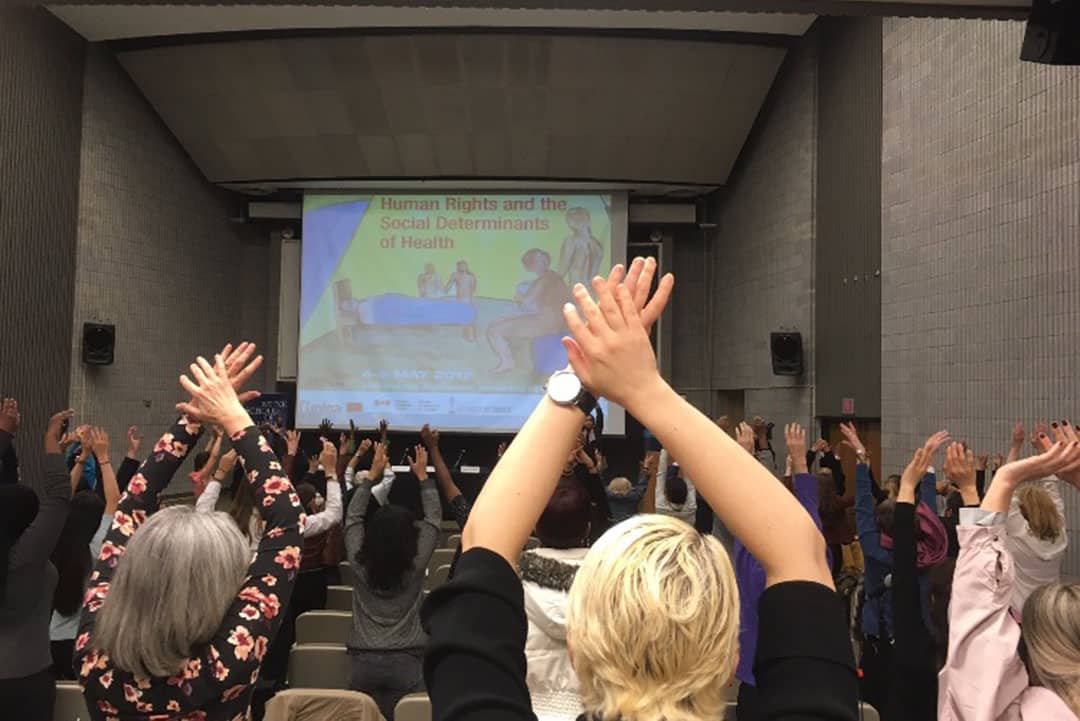Professors Ananya Banerjee and Jackie Bender decided in January 2015 that they were going to add something new to their three-hour lectures: for three minutes, they integrated everything from dance routines to stretching just to get their graduate students to move.
These regulated movement breaks received very positive responses from students. Now, the professors are hoping to take this feedback to the next level and study its effects on students and instructors in the undergraduate setting.
The idea of regulated movement breaks all started with a paper released in 2015 by U of T researchers from the Institute of Health Policy, Management, and Evaluation. “[This study] showed that individuals who are sedentary throughout their day, even though they are exercising regularly, have higher risk for various chronic diseases,” said Banerjee, a Registered Kinesiologist and professor at the Dalla Lana School of Public Health.
Upon reading this paper, Banerjee and Bender decided to integrate regulated movement breaks into their classes. “I’m trained to create exercise programs in different settings, and given that Dr. Bender and I… were teaching our graduate course that year… we decided that we really [needed] to implement movement breaks into the classroom to reduce sedentary behaviour among students,” Banerjee explained.
There’s a lot of science fueling support for fitness breaks in the classroom. “A number of studies have shown that movement breaks increase the levels of interactivity with other students and with the course instructor, and that this positively influences acts of collaborative learning, which also helps to improve student learning retention,” said Bender, also a professor at the Dalla Lana School of Public Health.
While introducing these fitness breaks in the graduate setting, the professors conducted a quality improvement survey. “Movement breaks were met with high rates of acceptability from students, with about 86 per cent of students reporting that they enjoyed these short bouts of movement,” said Bender.
Participants also noted that the breaks helped improve their engagement with other students and instructors. Other impacts extended beyond the classroom and increased students’ intention to be more active and less sedentary outside of class.
With a successful application to the Learning and Education Advancement Fund granted by the Provost’s Office at U of T, Banerjee and Bender are now launching a more extensive study in the undergraduate setting.
For the 2017–2018 academic year, they are planning to integrate and assess movement breaks across all three campuses and involve over 1,000 students from various faculties.
“We are conducting a quasi experimental pre-post design [with] certain classes being exposed to intermission and other classes not… and then we’re going to be looking at the impact of participating in these structured, three minute movement breaks, that are led by… videos of certified instructors,” explained Bender.
These videos, which will be streamed by lecturers in their 2–3 hour sessions, will range from mindfulness to Zumba and everything in between. While the focus of this study is on students, the professors will also be tracking feedback from instructors, who will also participate in these exercises throughout the year.
They hope to get more insight on the impact of fitness breaks on student and instructor engagement, student well-being, as well as physical activity and sedentary behaviours.
For both professors, it all comes down to helping students. “We [really just] expect that through these movement breaks, they’ll lead to more engaged students who will feel better, learn better, and develop positive relationships with instructors and other students,” said Bender.


